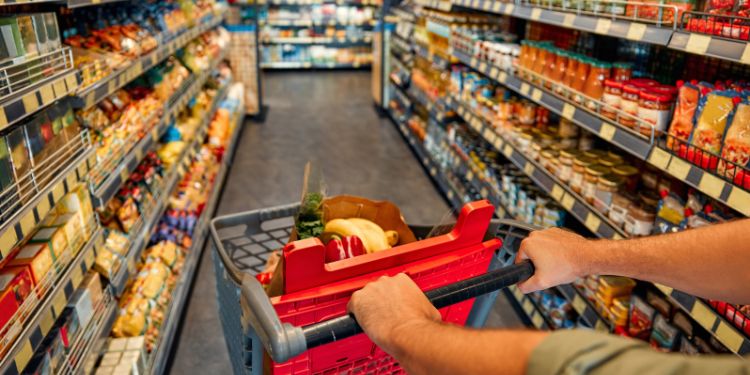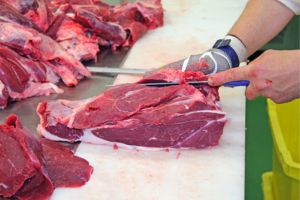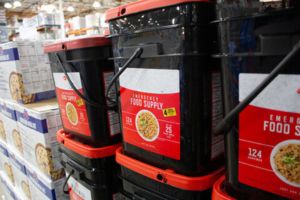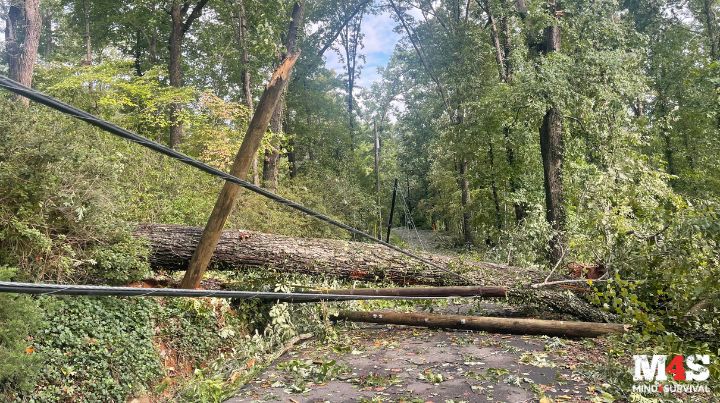Why These Items Skyrocketed in Price This Year

There’s no doubt about it, prices seem to be going up on everything from groceries to gas and even ground beef.
With all these skyrocketing prices on everyday essential items, you’re only right to wonder if there’s some price gouging going on here. It can’t all be inflation, right?
So, I thought we could dig a little deeper to look at some of the more common items that have gone up on store shelves, to find out why they’re suffering from such skyrocketing prices.
Eggs
The strange fluctuations in the price of eggs in the last year or so have certainly been frustrating. Eggs are basic items that for ages have always been cheap. Yet suddenly, the price of eggs has doubled or in some places tripled.
Several factors cause egg prices to fluctuate each year. Chickens lay fewer eggs in the winter, and good old supply and demand drives up the price in northern tier states. Young chickens also don’t start to lay their first eggs until late spring or early summer.
Avian influenza is also a big factor causing a spike in egg prices. When an outbreak does occur, poultry farmers can suffer major losses, or their entire operation shut down.
If this happens a lot, like it did this past year, it can cause the price of eggs to skyrocket. Often without warning or proper explanation.
Money Saving Tip
Beef
 The skyrocketing price of beef this year can have you wondering if they’re feeding steers’ blood diamonds instead of hay! However, the price of beef is significantly influenced by several factors.
The skyrocketing price of beef this year can have you wondering if they’re feeding steers’ blood diamonds instead of hay! However, the price of beef is significantly influenced by several factors.
Globally, this year a lot of prime beef-producing areas were struck with prolonged drought.
This increased the price of grain, which meant it was harder for commercial farms and ranches to feed the steers meant for slaughter. It also made it costlier to keep feeding their heifers, which they need to continue providing the operations with steers in the next generation.
High summer fuel prices also contributed to the skyrocketing price of beef. It costs more to run the machinery needed to grow the grain they eat. It also costs more to transport harvested steers through the feedlot to butchering and distribution process.
Money Saving Tip
Beef tends to be at its lowest point in the year in the fall. This is when ranchers are reducing the size of their herds for the winter. Talk to your local butcher about buying a half or quarter of a steer. You should then can it using this tried and tested method, like I did, for a 20+ year shelf life.
Butter and Milk
 Butter and milk suffer from the same price problems that beef does. Except there are additional factors weighing in.
Butter and milk suffer from the same price problems that beef does. Except there are additional factors weighing in.
The heat of the summer and prolonged drought meant that dairy cows were producing less milk. This reduces the supply available to meet demand, which drives up the prices.
There was also a HPAI A(H5N1) “Bird Flu” outbreak in multiple states this year, which also managed to affect the bovine population. Massive commercial dairy operations were temporarily shut down or quarantined without allowing any milk production to go out.
Fuel and transportation costs are also more volatile in the dairy industry. Milk needs to be transported from producer farms to processors every few days, if not daily. This means fuel costs for milk trucks. It also means fuel costs for the delivery trucks that bring butter, cream, milk, and all those other essential dairy products to stores.
Money Saving Tip
Milk and butter tend to be at their lowest in late spring and early summer. Often right before gas prices go up in anticipation of the summer travel season. You can buy butter in bulk. Then freeze it in sealed foil and plastic. Kept this way butter can stay good for up to 12 months.
Related: Making Butter at Home, Like Our Grandparents
You can also clarify butter, essentially turning it into ghee. This can be canned and stored in a cool dark place for up to 2 years.
Propane
 In North America, the cost per unit of propane fluctuates in with the rhythm of crude oil and gasoline.
In North America, the cost per unit of propane fluctuates in with the rhythm of crude oil and gasoline.
This is because domestic level is produced by the process of refining oil.
In the previous generations, they would just burn it off as a waste gas.
Then someone finally figured out that they could store it and use it for things like gas grills and home heating. This also means that these costs can skyrocket with the cost of crude oil.
However, these fluctuations can vary by season. Such as earlier in the year when the price for a barrel of oil went up, during the winter. More people were using propane for home heating, which drove up demand, while the cost to create the supply also went up. It also didn’t help that one of the major US refineries went down at an inopportune time!
Usually, a price increase in propane follows slightly behind the increase in the cost of crude oil. However, speculators have gotten wise to this trend and rushed to increase the per-unit cost of propane even before the supply and demand curve got there.
Related: DIY Solar Water Heaters to Cut Down on Energy Bills
This kept the cost of home heating higher than usual for longer than usual. It could also be a sign of a recurring pattern that might strike again later this year and into the future.
Money Saving Tip
Assuming there isn’t an oil crisis somewhere in the world, the price of propane tends to be at its lowest in late summer. If you have a propane tank to run your furnace, this is a prime time to stock up before propane prices skyrocket in late fall.
Bread
 Global drought issues and the war in wheat-producing Ukraine have caused the price of bread to steadily climb over the past year.
Global drought issues and the war in wheat-producing Ukraine have caused the price of bread to steadily climb over the past year.
Since wheat is also a highly traded global commodity, investment speculators have also had a hand in driving up the cost of wheat and bread.
Bread also tends to be produced locally and is then delivered within 250 miles or less to stores, on multiple trucking runs throughout the week. This means that increases in fuel and transportation costs get added to the price for a single loaf of bread.
Money Saving Tip
The most effective way to save money on the cost of bread in your household is to learn how to make it yourself. Not only is artisanal bread baking a very respectable and fun hobby, it can also save you a boatload of money over a single year.
You can even buy bread flour in bulk. Then store it in sealed containers for a year or more. Properly stored dry active yeast can last up to two years. With some practice, you can make a loaf of bread for less than $1. Compare that to the price of a loaf in the stores and multiply that by the number of loaves your family goes through in a week.
Charcoal & Wood Pellets
 Deforestation, increases in production cost, and changes in government regulations have all combined to create skyrocketing charcoal prices. Supply chain issues and rising transportation costs also haven’t helped.
Deforestation, increases in production cost, and changes in government regulations have all combined to create skyrocketing charcoal prices. Supply chain issues and rising transportation costs also haven’t helped.
Related: How to Make Your Own Charcoal
Several charcoal and wood pellet manufacturers were accused of price gouging their products. The argument is that these products are supposed to be made from wood fibers leftover from processing timber.
They are designed to be resistant to price fluctuations driven by supply and demand. Not to mention some tout themselves to be sustainably “Green”. The companies accused have yet to respond, which makes it even more suspicious.
Money Saving Tip
The easiest way to save money on charcoal is to stock up during the winter when the price per bag is at its lowest. This is when people are gilling the least and the low demand and high supply lowers the cost per unit.
If you stock up on wood pellets during this time, you have to make every effort to keep them dry and sealed away from humidity. The lignin binder used in wood pellets can break down with humidity over time.
It’s also possible to make your own lump charcoal. However, you do need a little know-how and access to dried hardwood.
Emergency Food Buckets
 The rising demand for emergency food supplies has led to a noticeable increase in the price of emergency food buckets.
The rising demand for emergency food supplies has led to a noticeable increase in the price of emergency food buckets.
With growing awareness of potential crises—whether natural disasters, economic downturns, or health emergencies—many families are looking to stock up on long-lasting food options.
This surge in demand, coupled with supply chain disruptions and increased production costs, has driven prices higher. Additionally, limited stock availability from manufacturers has resulted in further speculation and price hikes, with some retailers charging upwards of $150 for a bucket that used to be $100.
Money Saving Tip
Instead of relying on those overhyped survival food buckets with their meager serving sizes and inflated prices, I decided to take matters into my own hands. I turned to this guide to learn how to preserve my own food and craft my own survival food solutions.
With over 100 recipes tailored for long-lasting storage without refrigeration, it became my go-to resource to create meals that truly satisfied and sustained me during challenging situations. So, rather than relying on high prices, inflated promises and underwhelming servings, I took charge of my prepping by preparing real, nourishing food using this invaluable guide.
While inflation, price gouging, and aggressive market speculation are certainly part of why prices have skyrocketed on a lot of items, they’re not the only factors at play. Extreme weather and drought affecting crops like wheat, coffee, and cocoa helped drive up the price of everyday staples like bread, chocolate, and the morning cup of Joe.
Fluctuations in fuel costs also added to the already high cost of transporting goods like beef, eggs, and dairy products to market. Not to mention times in the year when quarantines for livestock illnesses like H5N1 made it hard for the supply to meet demand.
As we go into the next year, being mindful of why these items skyrocketed in price can help you time your purchases better. Being prepared to bulk-buy things like beef, coffee, butter, and propane can help insulate you from natural price increases.
You may also like:
 Read This Before Storing Water in Milk Jugs
Read This Before Storing Water in Milk Jugs
10 Things to Do on the Day the Economy Collapses (Video)
What Livestock My Grandparents Raised During the Great Depression
Foraging In Autumn: Edible And Medicinal Plants You Need to Forage Before They’re Gone
Read the full article here







